Lined with beaches, rivers, creeks, and marshes, Charleston County is the perfect place in the summer for anyone who enjoys water sports. Kayaking and surfing are relative newcomers to the Lowcountry, but they caught on fast and gained in popularity in the last half century. Fishing, on the other hand, has a long local tradition stretching back to the Native Americans who lived along the coast. Below, we’ll explain the history of these fun filled waterfront activities, and will provide inside tips and pointers of the best places to fish, kayak, and surf in Charleston.
Fishing
There are diverse options for the fishing enthusiast, ranging from sport fishing for saltwater catches on the ocean, to leisurely line fishing at one of many local creek or river piers. There’s also no shortage of fresh and saltwater fish variety: tarpon, yellowfin tuna, wahoo, porgy, black seabass, flounder, sea trout, red drum, grouper, red snapper, catfish on the flower moving fresh rivers inland, and even sharks. More passive but still rewarding is the longstanding tradition of crabbing with pots or nets and collecting oysters.
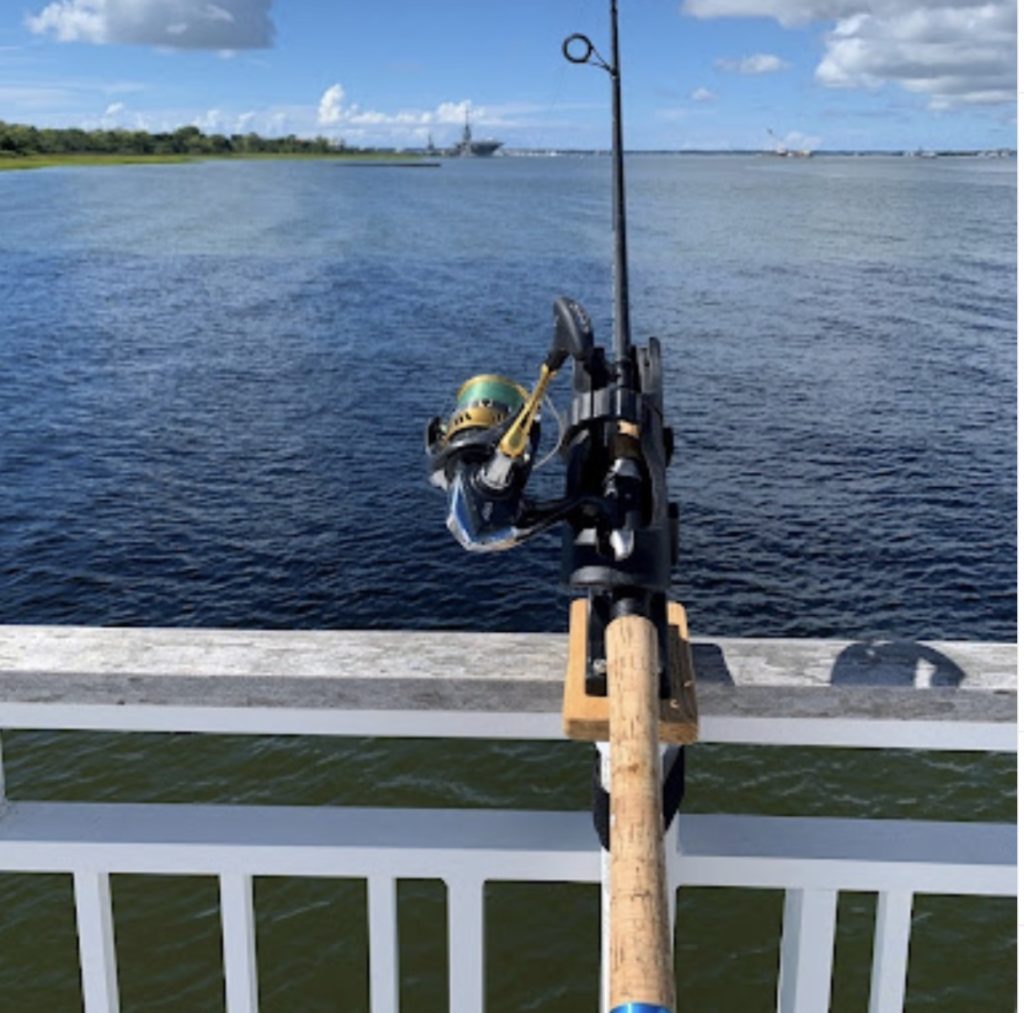
Malcom Leapheart explains, “As rivers enter the Lowcountry, their flow eventually meets the upper tidal waters of the Atlantic Ocean. Fishing for all the fresh- water species found further inland is good even in the brackish stretches of slightly saline water where the flows meet and mix. A cast there may result in a hookup with a largemouth bass or with a redfish, flounder, sea trout, sheepshead, or one of the other saltwater species that inhabit the state’s inshore estuaries. Below the brackish river stretches, the inshore species of saltwater fish all thrive. Other seasonal, migratory fish such as tarpon and crevalle jack are possible catches in the warmer months. To add another dimension to fishing along the South Carolina coast, there is also offshore fishing. From just off the beaches out to the artificial reefs there are other species such as black sea bass, Spanish mackerel, bluefish, bonito, king mackerel, grouper, and snapper.”
Some people catch and release, but traditionally, Lowcountry residents fished for food. Indigenous peoples ate oysters and shrimp and fished with sharpened sticks. Late seventeenth century illustrations show the Kiawah Indians roasting their fresh catches over an open fire. In the nineteenth and early twentieth century, street cries or hucksters peddled their wares of fresh shrimp and fish for sale in Charleston, caught that morning by the famous Mosquito Fleet, a group of African American fishermen who set out each morning with nets between three and six in the morning. An 1888 article described them as “hearty, fearless army of fishermen who supply Charleston and all portions of the State with salt water fish. Very few people in Charleston know anything about the risks, the dangers and the trials of the men who furnish to the city the enormous quantity of fish food which is required by a fish-eating population of over 60,000 souls” who set out in a variety of small boats, canoes, and bateaux.

Fishing is a low cost, high reward water sport, but aware of tidal fluctuations and the water temperature during different times of the year, as they will impact what types of fish are in the waters. Summer is the best for ocean fishing, but since the Lowcountry is subtropical, there isn’t a true off season.

Some fishing spots are in parks and charge a negligible parking fee, but many are free, and local fishermen have been known to pull up a chair and fish off the many bridges and causeways in the area. Downtown, there is Charleston Waterfront Park and pier on the Cooper River and overlooking Charleston harbor. Across the Ravenel Bridge, Mount Pleasant Waterfront Park has a long pier into the river where you can fish and watch dolphins pass. Pitt Street Bridge and Shem Creek in Mount Pleasant are popular and free also. On the other side of Charleston, fish the Stono River from James Island County Park or visit Folly Beach pier to see skilled anglers at work. Copahee Sound past Mount Pleasant is a popular winter fishing spot for redfish. For freshwater fishing, head inland to Lakes Moultrie and Marion, about an hour drive from Charleston.
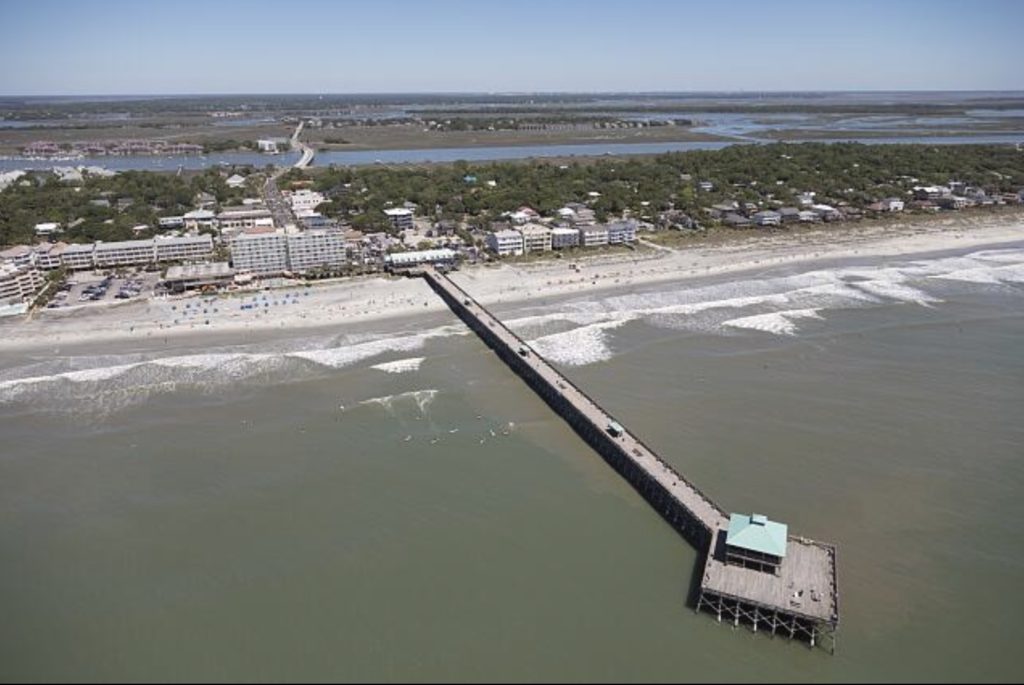
We covered boating in the last blog, https://charlestonempireproperties.com/best-of-lowcountry-living-charlestons-boating-traditions-past-and-present/, but we’ll remind local fishing enthusiasts who don’t have their own boat that several local companies offer premium charter fishing experiences: All in One https://www.allinonecharters.com, Charleston Boat Charters, Harbor View https://www.harborviewcharters.com, Flood Tide, Tight Line, Captain Kaleb, and others offer both inshore and offshore coastal expeditions. If you’re not a local and hook something tasty, you can bring a cleaned fresh catch to Charleston Crab House in the Charleston Market for their “you hook it, we cook it” offering.
Surfing
Surfing is an ancient sport originating in Polynesia, Hawaii, and making its way eventually to the west coast of the United States. Other indigenous groups fished from surfboard-like craft in present day Peru. Alexander Hume Ford (1868-1945) was born in the Lowcountry and is probably the first South Carolinian to surf, becoming fascinated with the sport when he lived for a time in Honolulu.
Beachgoers have always enjoyed strolling on the sand and swimming at Folly Beach, and entrepreneurs offered wooden paddleboards for rent as early as the 1930s, but surfing was first brought to Folly and South Carolina by Rick Ficthman, an Air Force serviceman who was stationed in Charleston in 1963. The west coast native introduced surfing to the local teenagers and formed the West Coast East Surf Club the following year to foster interest in the sport. Slowly, Folly grew into a popular surfing hub.
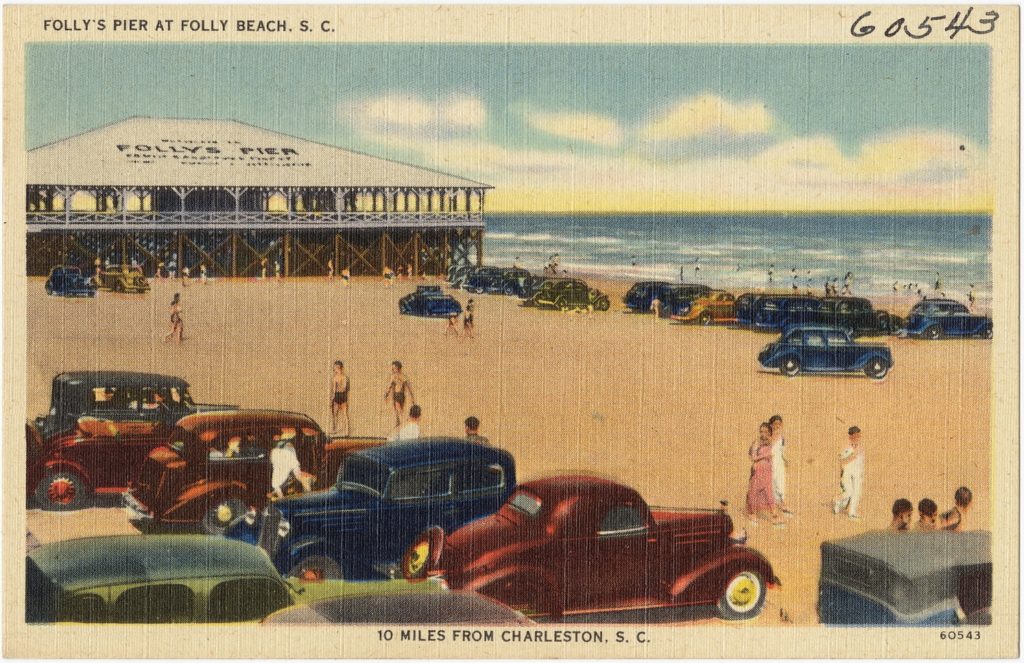
Corky’s Surf Shop opened in 1964, followed by McKevlin’s, which is now the oldest continually operating surf shop in the state, where customers have been buying or renting boards and signing up for lessons since 1965. Ocean Surf Shop opened in 1982 and is now run by Scott Quattlebaum, who has been surfing Folly since the 1970s. Folly Beach historian Stratton Lawrence calls Dennis “Mr. Mac” McKevlin “the savior of Folly surfing, serving as a spokesman for Folly Beach surfers, both as a business owner and as a representative on City Council for ten years.” McKevlins hosted surfing competitions and events that helped the sport reach a wider audience, and Folly has become the epicenter of South Carolina surfing in the past few decades. Visit https://www.mckevlins.com to learn more about their events and boards.
The Washout at Folly Beach, a windswept stretch of coast that is so named because the houses that were once there were washed out into the ocean by Hurricane Hugo in 1989, is widely regarded as the best place to surf in South Carolina. The lack of rocks and large oyster beds make this a good place for beginners, while further out, experienced surfers catch bigger waves. The Folly Beach fishing pier is also right nearby, as is Center Street, with its surf shops and beach themed places to eat. The best time of year to catch bigger waves is late summer/hurricane season.
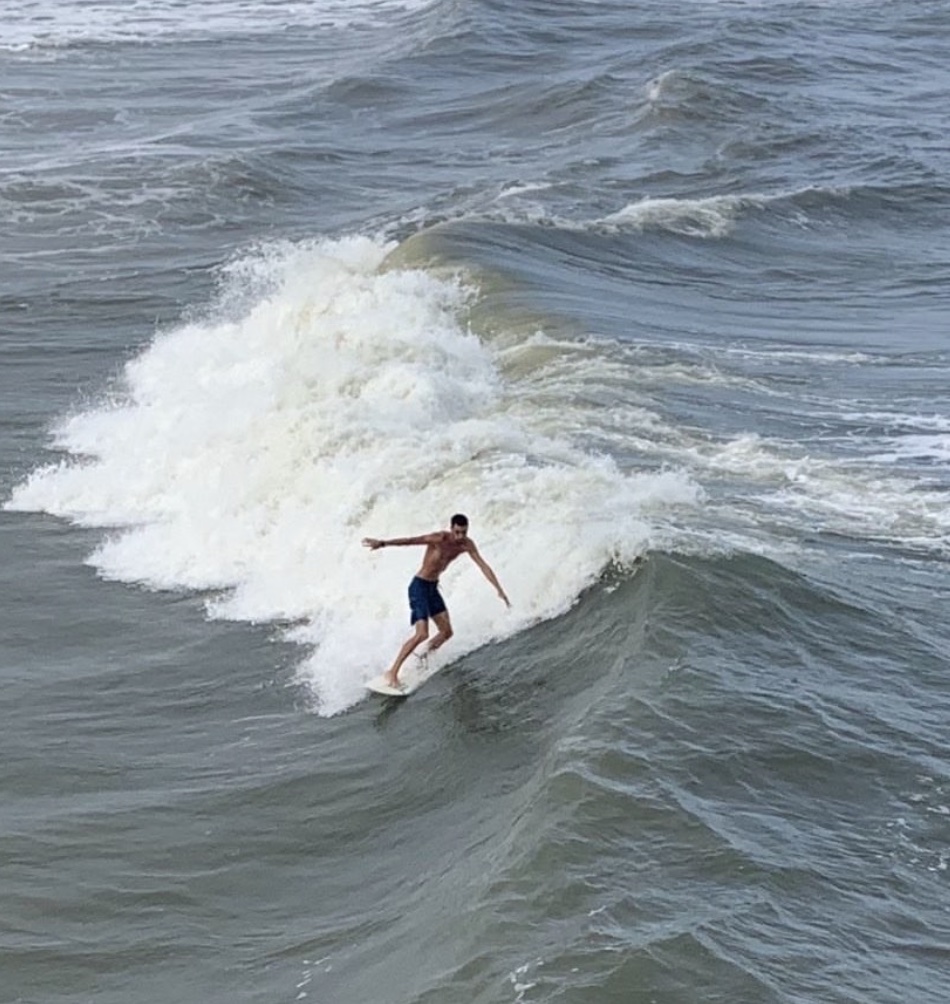
Isle of Palms beach is also ideal for beginners and several shops offer boards for rent, while Shem Creek and Kiawah Island have become popular with paddle boarders. Further north, there are good surfing waves near McClellanville at Cape Romain National Wildlife Refuge and Bull’s Island, but the undertows and occasionally wild surf make this part of the coast better for experienced surfers.
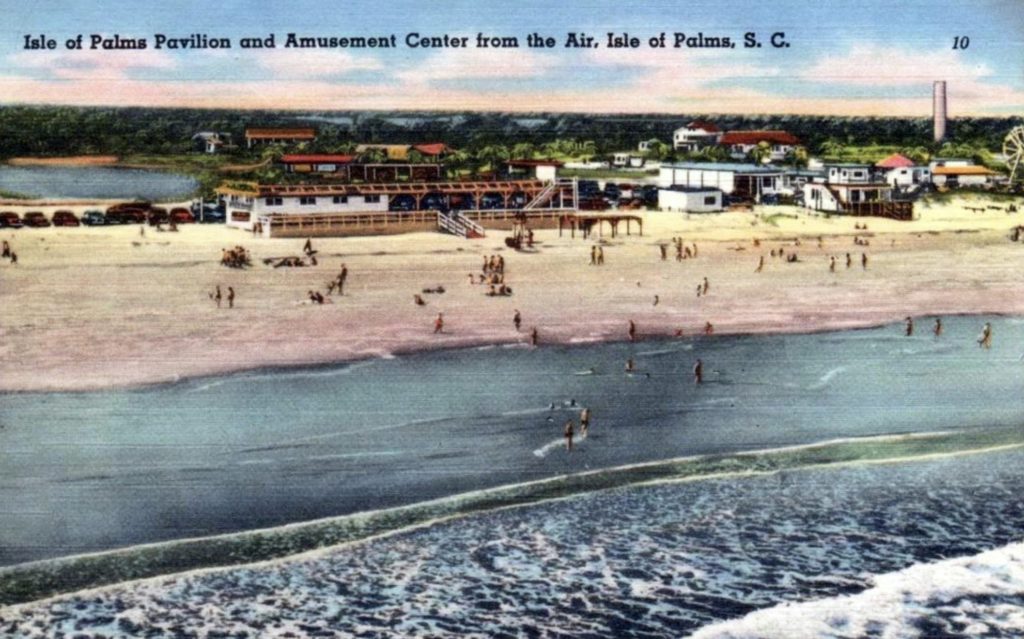
Kayaking and Paddleboarding
Like fishing, kayaking can range from an exhilarating excursion on the sea to a leisurely paddle on calm waters, depending on the tide and whether you choose to paddle in a creek, river, or ocean. And like surfing, kayaking is an old tradition that came to the Lowcountry fairly recently. A kayak is a small, narrow watercraft that has one or two cockpit-like seats for the paddlers. Inuit and Aleut natives used kayaks to fish with harpoons. They are often conflated with canoes and other small vessels, but are different because they have an “spray deck” or enclosed top. Modern kayaks are made of plastics, wood, fiberglass, and other composite materials, and some have cockpits with others are “sit on top” models, but the size and shape and rowing principles of the crafts have changed little over time. Kayaks are mentioned several times in historic Charleston newspapers in travel accounts in Alaska and other traditional places were kayaks were used, but the first mention of one locally (though it might not have been a true kayak) was in 1953, when a Mr. Jervey ran an add asking “will the two small boys who were observed to borrow and paddle away from the Municipal Yacht Basin, a 12’ brown canvas kayak.”
Nature Adventures https://kayakcharlestonsc.com rents paddleboards and kayaks and also offers lessons and guided kayak tours. Based at Folly, Charleston Outdoor Adventures https://www.charlestonoutdooradventures.com rents kayaks and also has boats for charter for fishing trips. Charleston Kayak Company https://www.charlestonkayakcompany.com launches from the upper Ashley River, which meanders past the historic Drayton Hall, Middleton, and Magnolia plantations. They also offer a blackwater cypress swamp kayak experience in the spring season before the bugs and heat arrive. For the nature lover, Coastal Expeditions (*link ) operates a ferry to Bull’s Island and Cape Romaine that is guided by expert naturalists. On the island, visitors can swim and hike, and rent kayaks or take guided kayak tours. One of the best appeals to kayaking is that the craft are small and quiet, so they are an ideal way to get close to wildlife including sea birds, dolphins, and alligators in freshwater, without disturbing them.
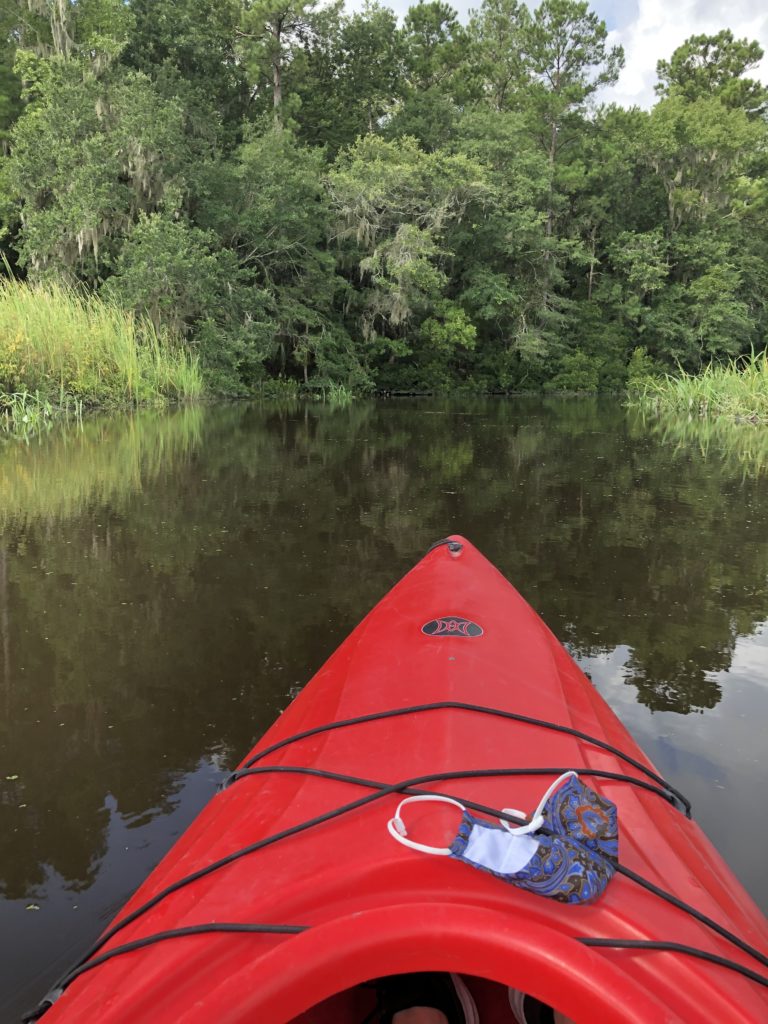
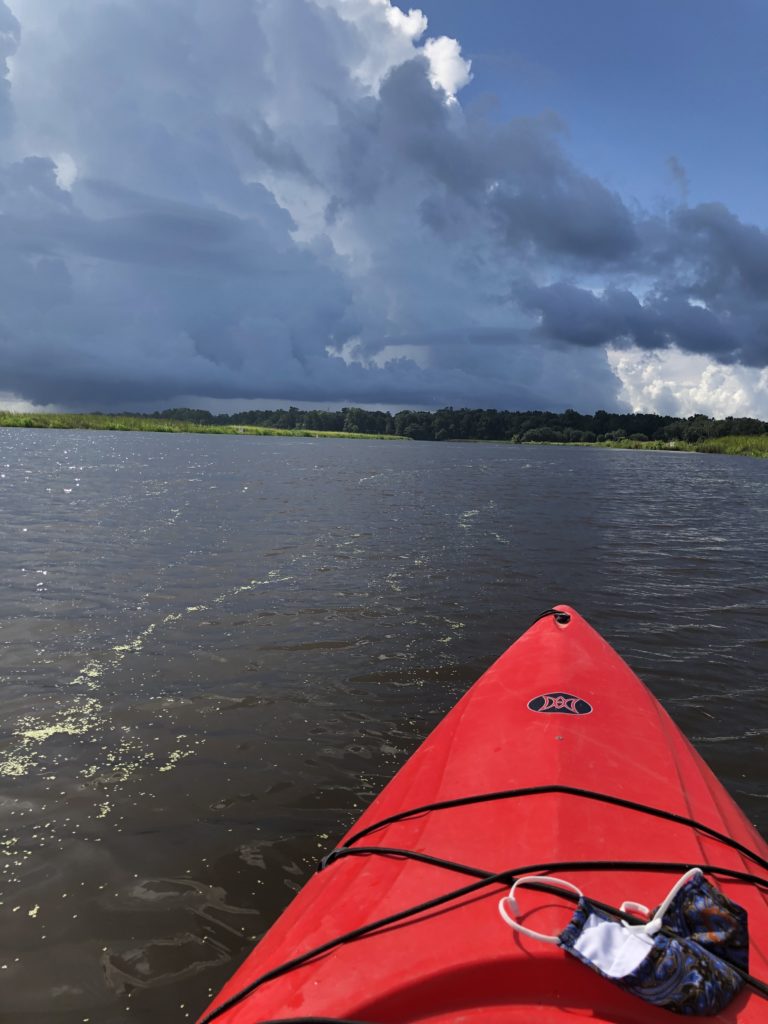
Charleston County Parks offers beginner kayak lessons (open to ages sixteen and up). Their website explains: “Beginner or introduction classes introduce the fundamental skills needed for paddling in calm and protected water environments (non-tidal). This is for you if you are new to the sport or if you are looking for more formal instruction as a base from which to expand. Some of these skills are beneficial in all areas and some can be learned on their own with minimal other skills. Our American Canoe Association (ACA)-certified instructors will teach you all of the skills and tips you need to enjoy kayaking.” To learn more, visit https://www.ccprc.com/3221/Learn-to-Kayak.
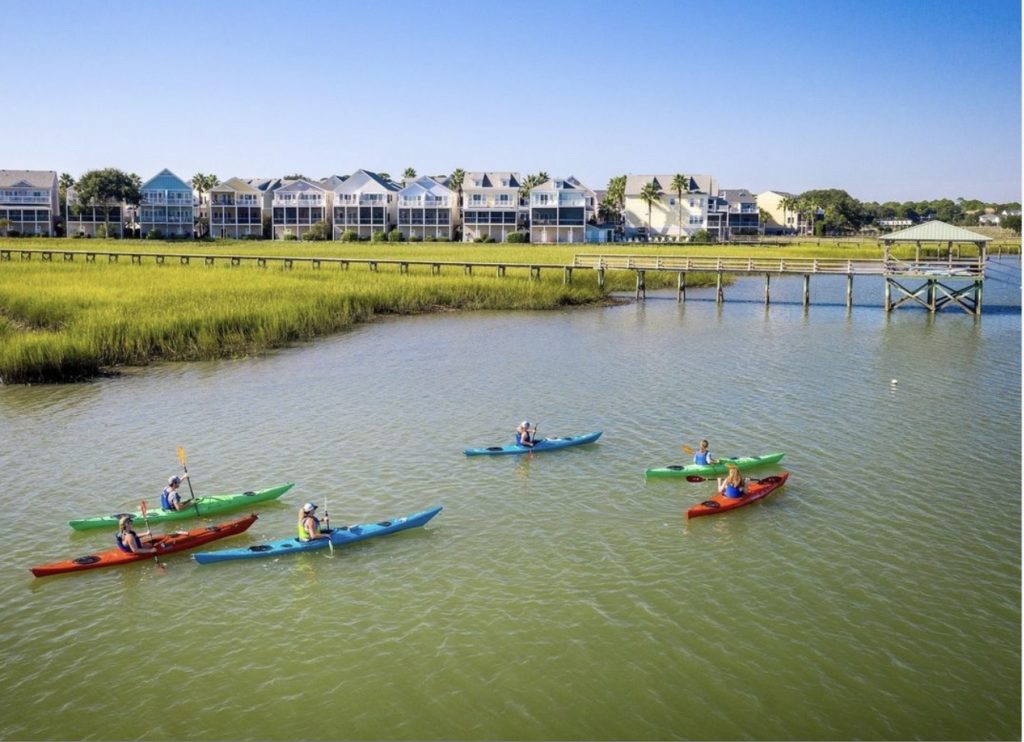
Canoeing on Edisto and river floats on inner tubes with a cold beer are Edisto and Ashley River traditions going back decades, with kayaking a newly added favorite. A short drive from Charleston, the Edisto River Canoe and Kayak Trail “is a recreational gem comprised of a series of access sites and points of interest along a 62-mile stretch of the Edisto River’s Main Stem. Tracing the majority of the border between Colleton and Dorchester Counties, the trail starts at Green Pond Church Landing and meanders eastward past Colleton State Park. At roughly the halfway point in the trail, the river makes a sharp southward turn near its confluence with Four Holes Swamp and passes Givhans Ferry State Park. The trail officially ends at Lowndes Landing but the river keeps on flowing into Charleston County. With ample camping and access throughout its length, the Edisto River Canoe and Kayak Trail offers a variety of single and multi-day trips for all ability levels.”
With rental options for kayaks and surf boards, numerous free fishing spots, and public launch slips free of charge at most county parks for kayaks and paddle boards, it’s easy to try your hand at a fun water sport in the Lowcountry this summer.

Sources:
- Tichnor Brothers historic postcard collection
- Library of Congress images
- https://freshwaterfishingadvice.com/best-times-seasons-charleston-fishing/
- Nicholas Butler. “Fish and Fishermen in 1888 Charleston.” Charleston Time Machine, CCPL. https://www.ccpl.org/charleston-time-machine/fish-and-fishermen-1888-charleston
- https://fishingbooker.com/blog/5-best-fishing-piers-around-charleston-sc/
- Charleston Sunday News, 5 February 1888, page 1
- https://www.scencyclopedia.org/sce/entries/fishing-recreational/
- Chris Dixon. “Wild Surf.” Charleston Magazine. June 2014.
- “All’s Swell.” Charleston Magazine. June 2011.
- Stratton Lawrence. Folly Beach: Images of America. Charleston: Arcadia Publishing, 2013.
- Foster Folsom and Lilla O’Brien Folsom. Surfing in South Carolina. Charleston: Arcadia Publishing, 2016.
- https://www.mckevlins.com
- https://www.carolinacoastsurfclub.org
- Matt Warshaw. The Encyclopedia of Surfing. New York: Houghton Mifflin Harcourt, 2005.
- https://ercktrail.org


